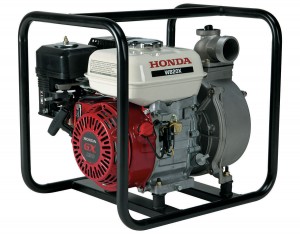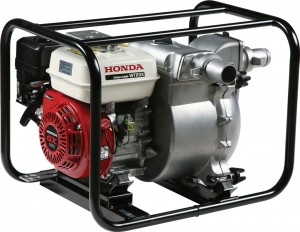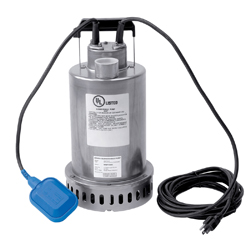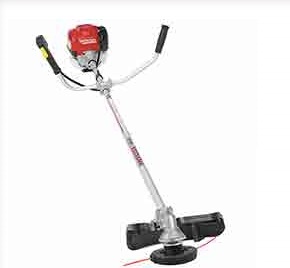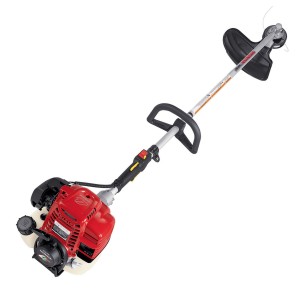Want your WB20 or WB30 general purpose pump to provide years of trouble-free service? Here’s what you need to know to keep up on maintenance from using the right fuel to getting a good spark.
Maintenance Schedule
Each use: Check engine oil level and air cleaner
The first month or 20 hours of operation: Change oil
Every three months or 50 hours: Clean air filter
Every 6 months or 100 hours: Change oil, check the spark plug, clean sediment cup and, if equipped, spark arrester.
Every year or 300 hours: Replace the spark plug.
Honda recommends having this pump professionally serviced every 6 months or 100 hours to clean the combustion chamber, fuel tank, and filter, and every year or 300 hours to check the idle speed, valve clearance, impeller and pump inlet valve.
The WB20 and WB30 use different engines, but because they use the same basic design, maintenance is virtually identical.
Fuel
The engines in these pumps are designed to run on 86 Octane or higher with a maximum of 10% ethanol (E10) or 5% methanol. Use a stabilizer if fuel will be left in the tank for more than one month after purchase. Replace the fuel after three months.
When adding fuel, only fill to the bottom of the filler neck. The inch of air space left in the tank is needed to let the fuel expand when heated up during operation or storage. Make sure the vents in the cap are clean to let air enter the tank as fuel is drawn into the carburetor.
Oil
To get an accurate reading when checking the oil level, wipe off the dipstick and insert it into the filler neck without screwing it in.
Honda recommends oil with an API service category SJ or later. 10W30 will work under most conditions, and SAE 30 can be used at operating temperatures between 50 and 105ºF.
To drain the oil, remove the drain plug to the left of the oil filler neck. Use a new sealing washer when reinstalling the drain plug to ensure a tight, leak-free seal.
The engine in the WB20XT holds 0.59 quarts, while the engine in the WB30XT holds 0.61 quarts. When adding fresh oil, it should come up to the edge of the filler neck.
Air Filter
To open the air cleaner box, remove the wing nut on the top of the box followed by the cover washer and air cleaner cover. From there, the filter and grid can be lifted off of the carburetor.
If the air filter is dirty, clean it using a non-flammable solvent or water and a mild detergent. Once dry, soak the filter in clean engine oil and squeeze out any excess.
Sediment Cup
To clean the cup, set the fuel valve lever to “OFF.” Unscrew the sediment cup, located directly below the fuel switch, and remove the O-ring that sits between the cup and the carburetor.
Wash the cup in a non-flammable solvent. Place a new O-ring in the carburetor opening and reinstall the sediment cup. Open the fuel valve and check for leaks.
Spark Plug
Remove the spark plug cap and wipe away any dirt. The plug can be removed with a 13/16 inch spark plug wrench. The plug gap should be between 0.028 and 0.031 inches (0.7-0.8 mm.)
When installing the plug, screw it in by hand to prevent cross-threading, then tighten it down with the plug wrench. Once the plug seats, turn it another 1/8-1/4 turn if it’ s a used plug, or ½ turn if it’s a new plug.
Spark Arrester
These pumps don’t come with a spark arrester, but one can be added to meet local fire and safety regulations. Let the engine cool for at least a half hour before handling the muffler.
To access the arrester, first, remove the two 8mm nuts attaching the muffler to the engine. Remove the muffler.
Next, remove the four 5 mm screws from the muffler protector, then remove the protector from the muffler.
Remove the 4 mm screw from the muffler outlet. You can now slide out the spark arrester.
Clean off carbon deposits on the arrester with a wire brush. If there are cracks or holes in the arrester, it needs to be replaced. Reassemble in reverse order.
Get the Parts You Need for Your Honda Water Pump
Hondalawnparts.com is a certified Honda Power Equipment and Honda Engines dealer. From hoses to spark arresters, if it’s Honda, we can ship an OEM replacement to your door whether you live in the U.S. or Canada. Need help finding a part? Browse our water pump accessory section or select your model using our search engine to see Honda factory diagrams and pick what you need.

